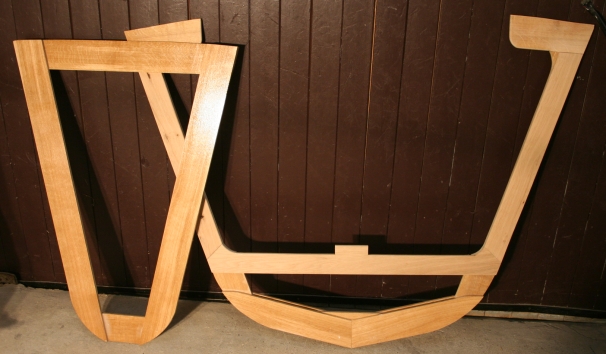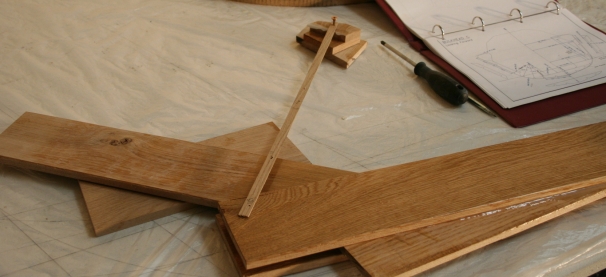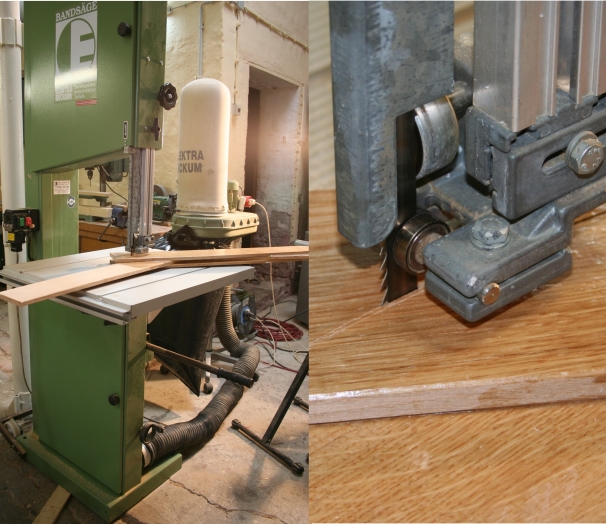Here
you
see the my special table with bulkhead
B. The packages are bricks
wrapped in plastic bags. These bricks
are needed to fix the different
pieces of wood for the first time.
Than the squared timbers are applied
to ensure to get sufficient pressure -
but be aware that the pressue
must not be to high - otherwise the
epoxi runs away...
 Bulkhead
A and B are almost ready!
Bulkhead
A and B are almost ready!
Bulkhead A is rather simple to
build -
instead of
bulkhead B and so on. Bulkhead C and
the following ones are better to
be build in two sections. First the
lower part, than the upper one.

The
lower
part of bulkhead C on the table. A
piar of compass is used to
draw the arc:

The band
saw is very appropriate to cut the
arcs:

 Bulkhead
C
is
made out of three layers of oak.
Bulkhead
C
is
made out of three layers of oak.